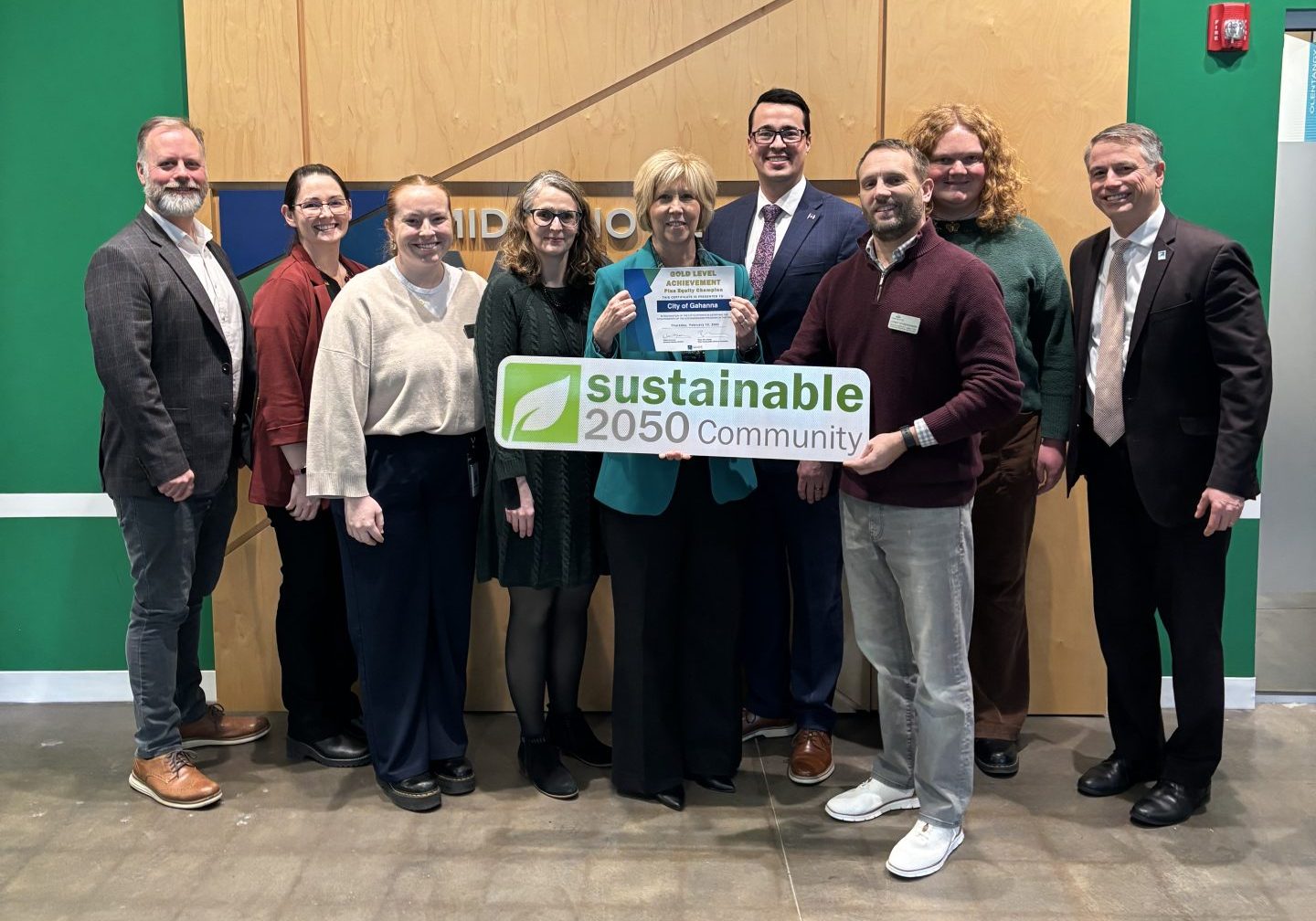By Carrie Ghose
Published in Columbus Business First
The $20 billion Intel development in western Licking County, the largest in Ohio’s history, is a game-changer for the Greater Columbus region in countless ways.
The Mid-Ohio Regional Planning Commission created a map for its annual State of the Region event on Friday, showing that 20 counties are within an hour’s drive of the site.
“It’s clear their suppliers and employees will come from every county in our region and beyond,” said William Murdock, MORPC’s executive director.
“It really will take a regional approach to harness the resources and imagination needed to plan for this investment,” Murdock said.
“Growth brings urgent clarity to what we need to do to power our region forward,” he said. “We need relentless collaboration and planning across communities and partners.”
There was a lot of interest in the regional planning commission’s State of the Region, attracting more than 1,000 people to a ballroom of the Hilton Columbus Downtown and focusing on transportation needs for the area, and planning as a region to address them.
In a separate room, the agency presented a hologram video of a trackless tram system being developed in China as food for thought, whisking people to and from John Glenn Columbus International Airport, traveling along Riverside Drive past the popular Bridge Park development of offices, homes and restaurants in Dublin, and down Main Street in old Hilliard.
That type of technology may be a ways off. But officials continue to push for Amtrak routes through Columbus, with a Downtown station near the Hilton at the Greater Columbus Convention Center, where Union Station was. Demolition of the station began in 1976 and was finished in 1979.
Charles Small, deputy assistant secretary for intergovernmental affairs for the U.S. Department of Transportation, was Friday’s keynote speaker.
Before the event, Small talked to The Dispatch about the importance of communities across the region working together to solve transportation issues as the area is projected to grow to 3.15-million people by 2050.
“Part of the secret sauce is consensus,” Small said.
He pointed to two areas where he believes that is working and paying dividends. One is Tampa, Fla., which has a fare-less streetcar such as Cincinnati and and award-winning airport; J.D. Power named Tampa International Airport the No. 1 large airport in the country in a satisfaction study.
The other is the Chicago region with its CREATE (Chicago Regional Environmental and Transportation Efficiency) program aimed at improving the metro’s rail and road network that involves not only the private sector but unions as well. So far the federal government has provided $600 million toward the CREATE going back to the Barack Obama administration.
The Central Ohio Transit Authority plans on placing a 0.5% sales tax increase on the November 2024 ballot that would help fund bus rapid transit lines through the LinkUS program. Officials said the tax would help the area leverage federal money to help fund the system.
Small said a local tax is not a necessary component to leverage federal dollars, “but it’s always well-received by the federal government” that helps accelerate projects, he added.
One of the first routes planned would be a bus rapid transit line heading west out of Downtown along West Broad Street past the long-closed Westland Mall. In January, the state said it would pay to demolish the old mall, providing about $13 million to tear down the mall and presumably make it more attractive for redevelopment.
Jim Schimmer, Franklin County’s director of economic development and planning, called the Westland site the poster child for what could be done by integrating transit. He said a couple of national developers have recently expressed interest.
“The future is wide open,” Schimmer said.
Small said that officials must integrate housing into new transportation systems.
“Every transportation decision is a housing decision,” Small said.
John Gardocki, MORPC’s transit principal planner, said before the event that the agency is pushing for more dense housing developments near job centers. Since transit has limited resources, officials will plan transit systems for more densely populated areas, Gardocki said.
“They’ll do it where it makes sense,” he said, citing Bridge Park in Dublin as an example, and said New Albany makes sense as a transit hub.
MORPC also presented results of a “Leaders Listen” survey it is conducting with The Dispatch and CHRR, a research center at Ohio State University.
About 2,500 people answered survey questions. Among the results: Of those responding to questions about electric vehicles, 85% consider their high price to be a barrier, and 77% said finding a charging station a concern. But 90% were in favor of Amtrak service.
Carrie Ghose covers technology, startup funding and financial services for Columbus Business First.






